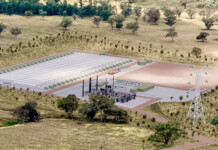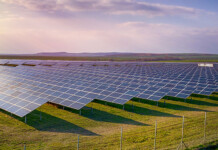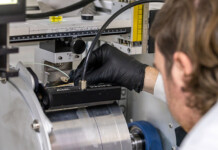By Phil Kreveld
Fevered fictions, far-out fables, and very few facts litter the electrical energy landscape.
In reverse order: we have the highest electricity tariffs (easily dispelled—just google OECD tariffs or the Australian Energy Council); baseload is essential; and the transition to renewables poses really difficult engineering problems—and that is a fact. It doesn’t get much of an airing—if at all. Again, in reverse order: renewables are the most expensive form of energy; you can’t rely on renewables because the sun doesn’t always shine and the wind doesn’t always blow; and centralised control of grid stability will be difficult to avoid.
Let’s stick to facts, starting with flexible AC transmission systems (FACTS). It is not an engineering fiction although its realisation in hardware and control systems is only partially being realised—it’s still very early days. The renewable transition brings the need for FACTS closer. FACTS is the collective name for power-electronics based series and shunt transmission line devices, and supervised and controlled remotely.
Related article: Tilting at windmills
Baseload has gone; we now have:
(a) highly variable power demand, courtesy of rooftop solar,
(b) highly variable large-scale solar and wind,
(c) highly variable battery charge levels, and
(d) highly variable power flow through transmission lines.
The political divide is of no use in figuring out policies to make this dynamic electricity ‘system’ work—‘system’ in name, because there are many loose ends resulting from ad hoc planning.
Firming (gas, hydro, nuclear) does not diminish the engineering challenge, and the need for FACTS. Spain has nuclear generation, it has coal—being phased out, and gas—but relies on traditional operating procedures, just like us! If the blackout of the Iberian Peninsula on April 28 this year demonstrates anything, it is that the factors determining frequency stability, sub-synchronous oscillation, voltage stability and protection are becoming sufficiently complex to manage for security of supply that human intervention based on traditional AC network operational experience is falling short.
The debates in the public forum is fed by impatience and fear. Impatience for renewable transition outcomes that are not neatly fitting in with the Australian Energy Market Operator’s Integrated System Plan. And fear of system collapse—so let’s get back the ‘good old days’.
- Fact is that solar, wind and batteries are firmly established technologies.
- Fact is that solar and wind have zero marginal energy input cost.
- Fact is that engineering is focussed on extracting as much energy as possible from solar and wind—and there’s where the costs of operation, transmission and energy storage come in—all of which feed into the cost of energy.
- Fact is that we do not have an overarching, comprehensive engineering plan.
- Fact is that we have never had one—including the ‘good old days’ of coal clunkers.
- Fact is that much electricity was and is subsidised in one way or another, if not directly to consumers, then indirectly by taxpayers.
- Fact is solar, wind and batteries are far more readily available than synchronous alternatives—but—require system and operational rethinking. And that gets us back to FACTS.

Voltage, v; Frequency, f; Active Power, p and Reactive Power, q are the critical parameters in any electrical power system. They are interdependent making stability control challenging because the active power, p (the one that runs motors, lighting, climate control, etc.) is now highly time-dependent. These days, active power varies more rapidly than ever before as mentioned above—much of it due to consumers taking the ‘law into their own hands’ (rooftop solar and batteries), and power variation inherent in large-scale solar and wind generators. Equally variable is reactive power, required for voltage support. That leaves frequency, which is affected by rapid changes in power.
In short, controls—whether human, by means of machine or a mixture—need to be nimble on a millisecond timescale. Fact is that we are refusing to recognise this and the evidence is that everything possible is being done to make the grid appear like the one of old. For example, turning off rooftop solar inverters to assure power flow in high-voltage transmission, and retaining synchronous ‘firming’ capacity. On the basis of there being no ‘free lunches’, it would be foolish to assume that by going over to the ‘new age of electricity’ (all renewables and batteries) that electrical energy would be lower cost than now, as associated costs have to be taken account of. However, the synchronous gear is of another era, whereas their replacement by inverters is a commercial reality. Therefore, to plug the hole in growing energy demand, new generation capacity takes the ‘electronic form’.
A clear choice presents: do everything possible to make the new grid with inverters appear like the old one used to be with its synchronous generators, and attempt to mimic the controls of yesteryear—or knuckle down to control strategies, some still nebulous, but in concept the ones needed for the dynamic renewable grid. The engineering challenge is being met by scare campaigns—’renewables cannot keep the lights on’. FACTS provides the basis for adequate control of renewables grids, providing security of supply.
FACTS does not create power—that has to be provided by generators. EnergyConnect will be utilising phase shifting transformers—although old technology, it has its place in the family of FACT power electronics devices. Phase shifting transformers permit redistribution of power between two transmission lines. FACTS devices such as phase shifting, also include controlled series power flow compensators and power oscillation blocking, shunt devices such var compensators and static synchronous compensators. The distinguishing feature of them all is remote control based on voltage, frequency, power and reactive power flow measurement throughout the grid, providing time-stamped visibility of all system busbars. FACTS relies on measurement devices, principally phasor measurement units situated throughout the grid and capable of reporting voltage and voltage phase angle, and frequency, as well as power flow measurement via instrument transformers. However, drowning in data because of a stream of measurements on second-by-second basis is not a solution—and therefore FACTS requires the setting of acceptable limits of grid parameters, and the design of algorithms taking charge of network control plus warnings to human operators. And that is a major job! However, one that should be taken on wholistically.
Related article: Essential energy, net zero, and more on Spain
Dynamic operating envelopes in distribution networks are an example of FACTS, although better thought of as a subset of a system that would include the high voltage grid. The Commonwealth Scientific and Industrial Research Organisation in conjunction with Melbourne University has investigated operating envelope controls of distribution networks. The score card is somewhat mixed but some networks have attained a high degree of visibility and controllability. However, AEMO lacks overall visibility, which it would have to have on a very short time-basis, i.e. if not milliseconds, then certainly seconds. That degree of visibility, added to control within distribution networks, for example to provide for the proper operation of dynamically-restrained load shedding relays, would be the basis of the transmission grid control. Protocols such Swarm and Grey Wolf algorithms would provide the basis for first-line control of FACTS devices, and provide human controllers with updated logs of control decisions taken. Ultimately, human operators could always intervene. However, particularly in Australia’s mainly radial transmission topology, decisions requiring sub-second actions would be within the purview of FACTS control.
To conclude, Australia is in the vanguard of renewable energy, and that’s a fact. We are therefore a unique testbed for FACTS.







